Let’s embark on an exciting journey to learn how to draw various pyramids using Python.
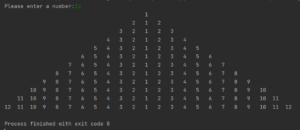
Drawing a Numeric Pyramid
To start, we’ll write a Python script that prompts the user to enter a number. Based on the provided number, the script will draw a pyramid of that size.
![]()
UserNumber = eval(input("Please enter a number:"))
for i in range(1, UserNumber + 1):
for j in range(UserNumber - i, 0, -1):
print(" ", end="\t")
for k in range(i, 1, -1):
print(k, end="\t")
for l in range(1, i + 1):
print(l, end="\t")
print(" ")
This script uses nested loops to print spaces and incrementing numbers up to the user-specified number, creating a pyramid shape.
Creating a Hashed Pyramid
Now, let’s explore another Python pyramid example, this time using hashes instead of numbers.
size = int(input("Enter number: "))
for number in range(1, size + 1):
for i in range(size - number):
print(' ', end='')
for j in range(2 * number - 1):
print('#', end='')
print()
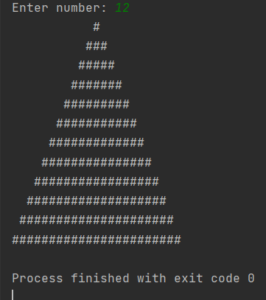
This pyramid will be taller and thinner, constructed using hash symbols.
Crafting an Upside-Down Pyramid
In a similar fashion, we can create an upside-down pyramid.
size = int(input("Enter number:"))
for i in range(0, size):
for j in range(i + 1):
print(' ', end='')
for x in range(size - 2 * i):
print('#', end='')
print()
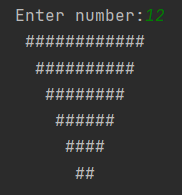
Constructing a Digits Pyramid
Next, we’ll construct a pyramid using digits, where each level’s number squares as we ascend the pyramid.
import math
x = 10
y = 0
for i in range(x):
a = x - i
y += pow(10, i)
for j in range(a):
print(' ', end='')
print(pow(y, 2))
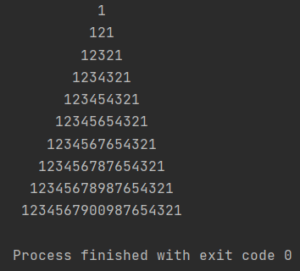
Designing a Letter Pyramid
Lastly, let’s create a pyramid using letters:
number = int(input('Enter the number:'))
for i in range(number):
n = ' ' * (number - i)
for j in range((2 * i + 1) // 2):
n += chr(65 + i - j)
for j in range((2 * i + 1) // 2, 2 * i + 1):
n += chr(65 + j - i)
print(n)
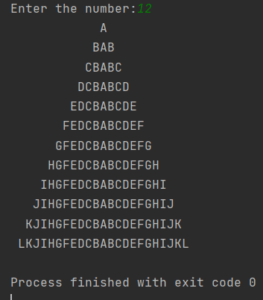
Now that you’ve become proficient in creating pyramids, let’s see additional intriguing variations to expand your Python skills.
Hollow Pyramid
Enhance your Python pyramid by crafting a hollow version. This design leaves the center of the pyramid empty, creating an exciting geometric pattern. Here’s a Python script to get you started:
size = int(input("Enter a number: "))
for i in range(1, size + 1):
for j in range(size - i):
print(' ', end='')
for j in range(2 * i - 1):
if j == 0 or j == 2 * i - 2 or i == size:
print('#', end='')
else:
print(' ', end='')
print()
Pyramid of Symbols
Explore the world of symbols by designing a pyramid with your favorite characters. You can choose any character or symbol to construct your unique pyramid. Here’s an example using asterisks:
size = int(input("Enter a number: "))
for i in range(1, size + 1):
for j in range(size - i):
print(' ', end='')
for j in range(2 * i - 1):
print('*', end='')
print()
Inverted Hollow Pyramid
Reverse the direction of your hollow pyramid, creating a unique inverted pattern. Here’s how you can achieve it:
size = int(input("Enter a number: "))
for i in range(size, 0, -1):
for j in range(size - i):
print(' ', end='')
for j in range(2 * i - 1):
if j == 0 or j == 2 * i - 2 or i == size:
print('#', end='')
else:
print(' ', end='')
print()
Feel free to explore these variations and experiment with different symbols, patterns, and directions to create captivating Python pyramids.
